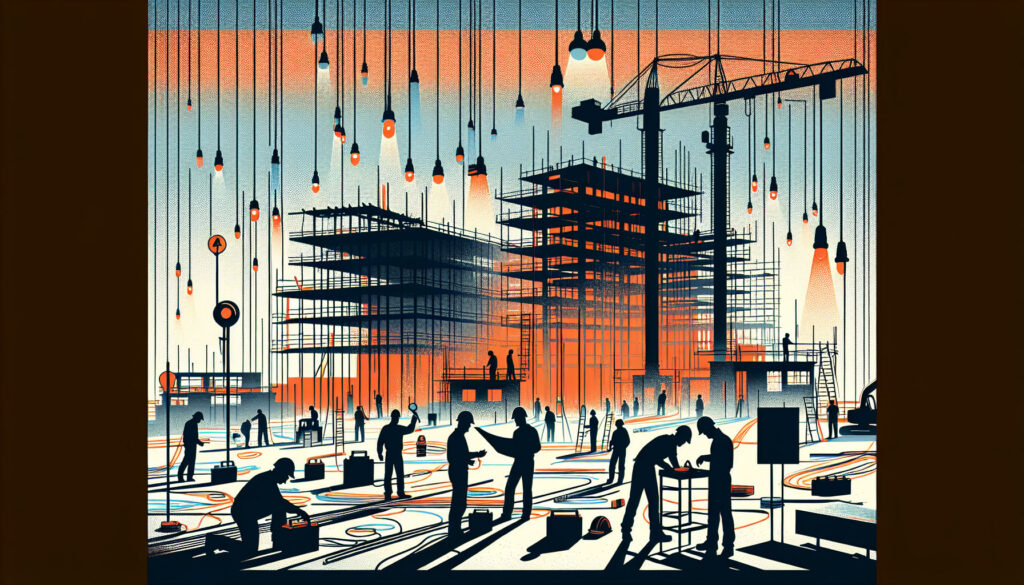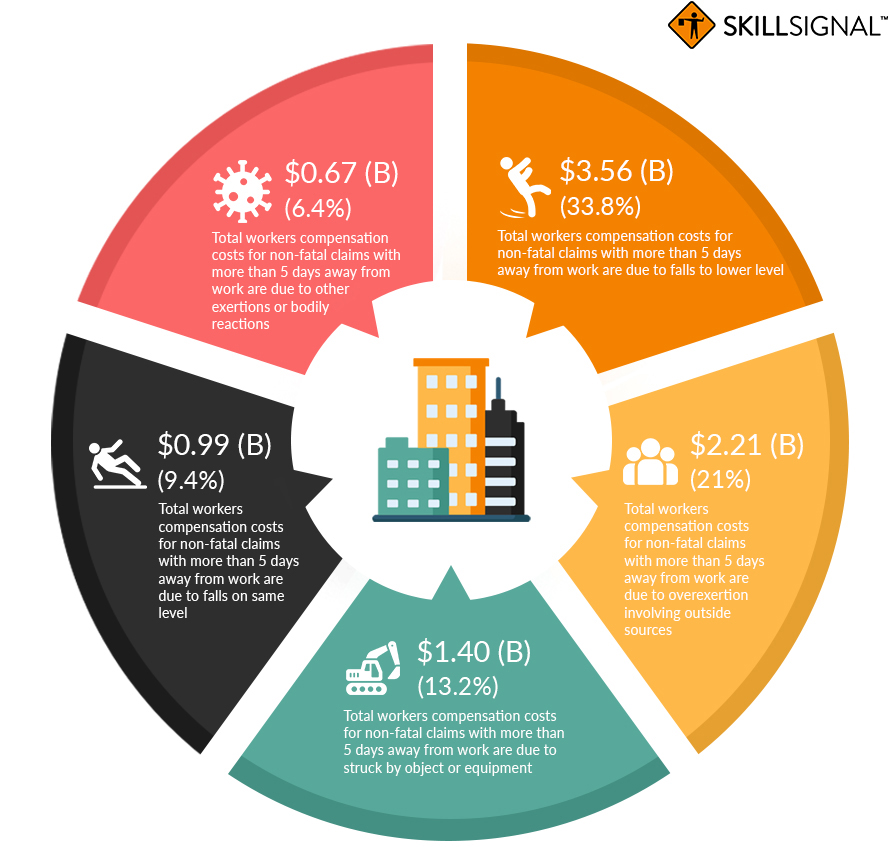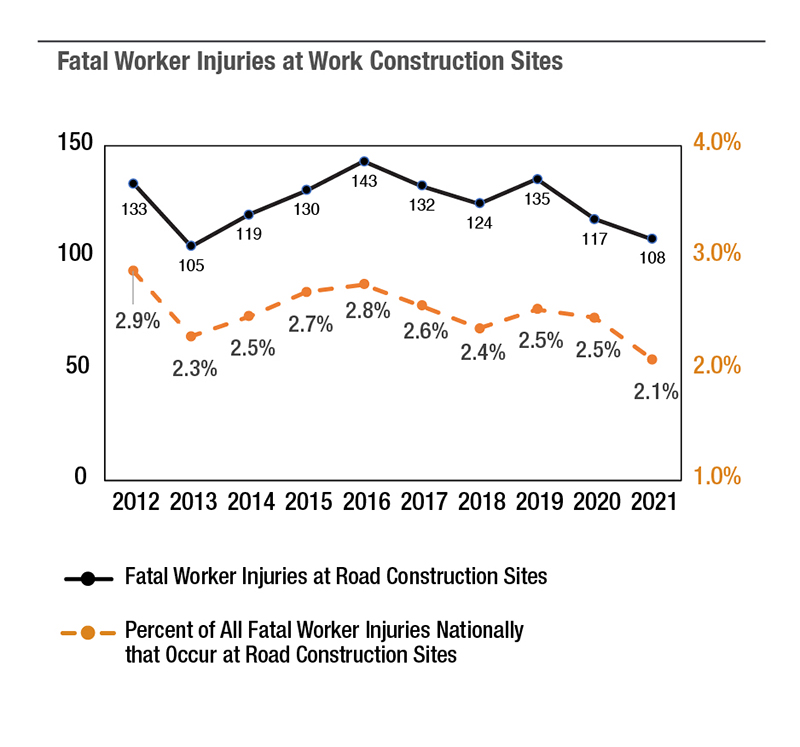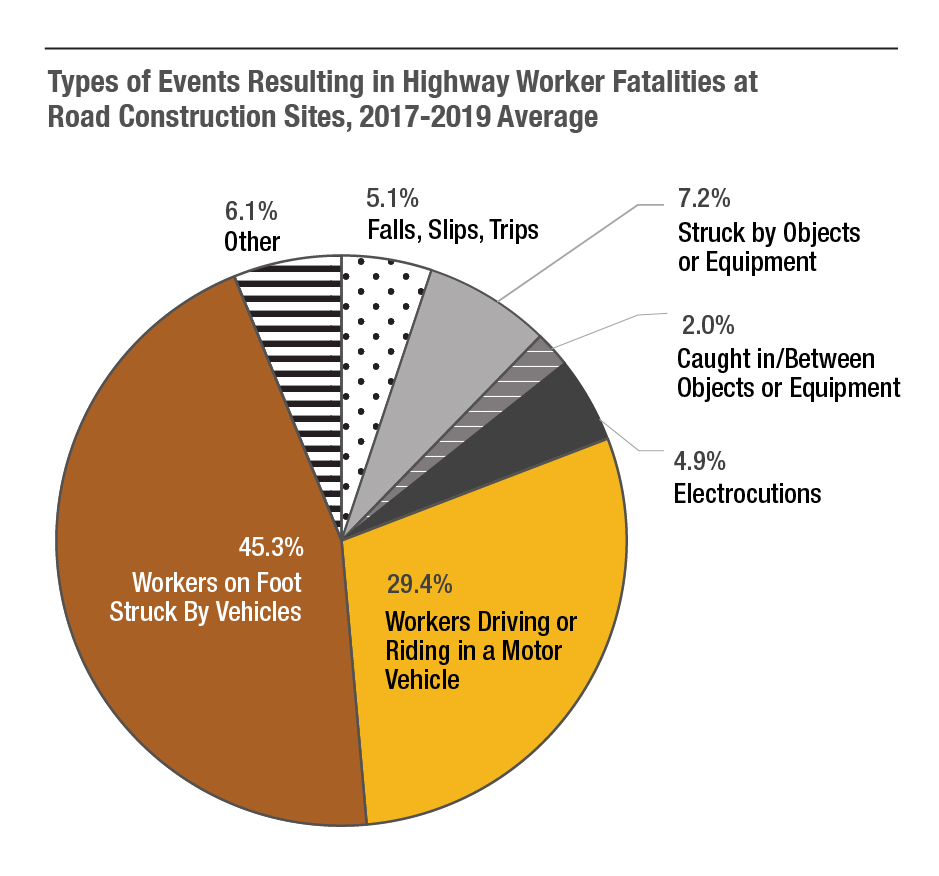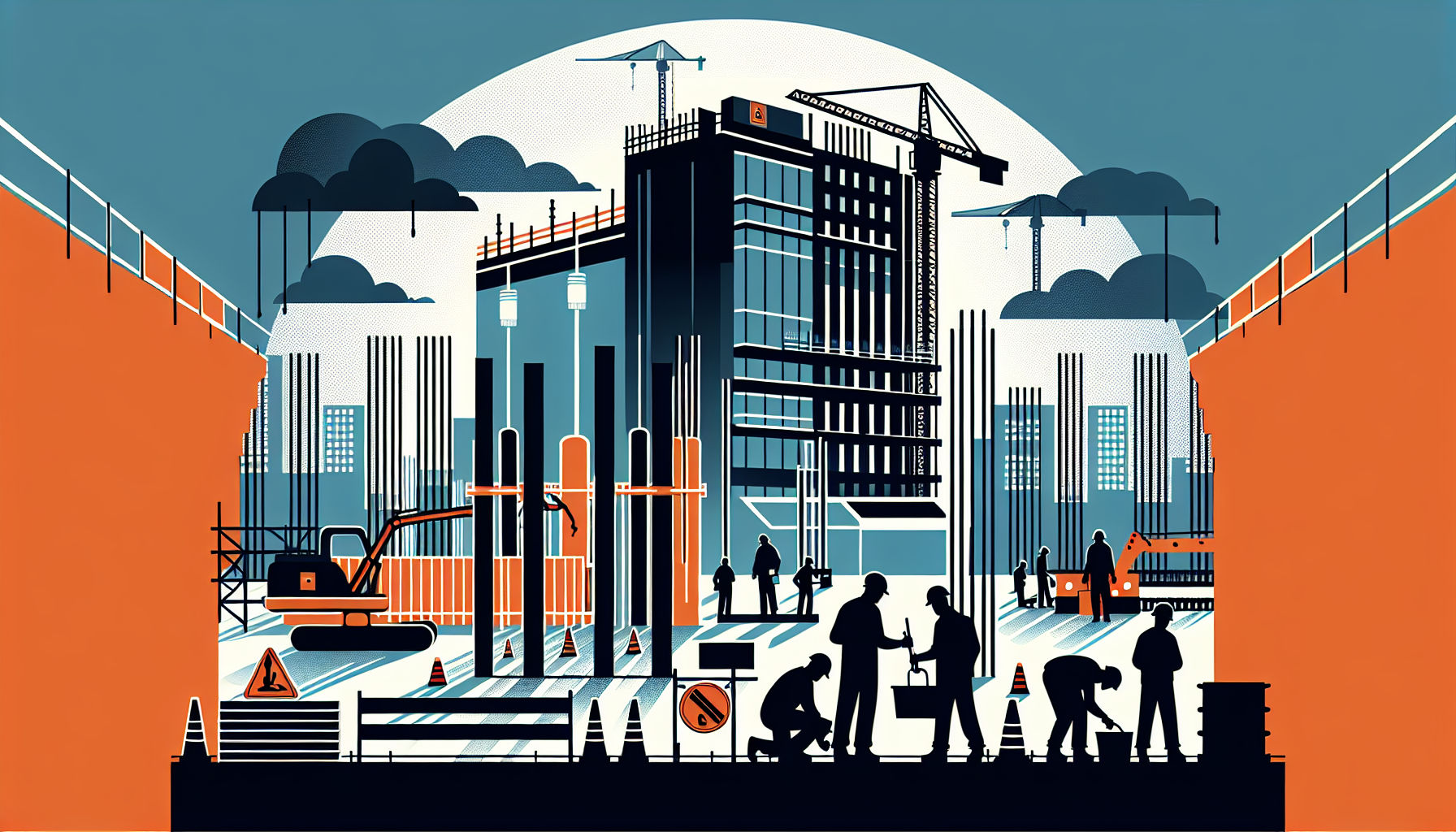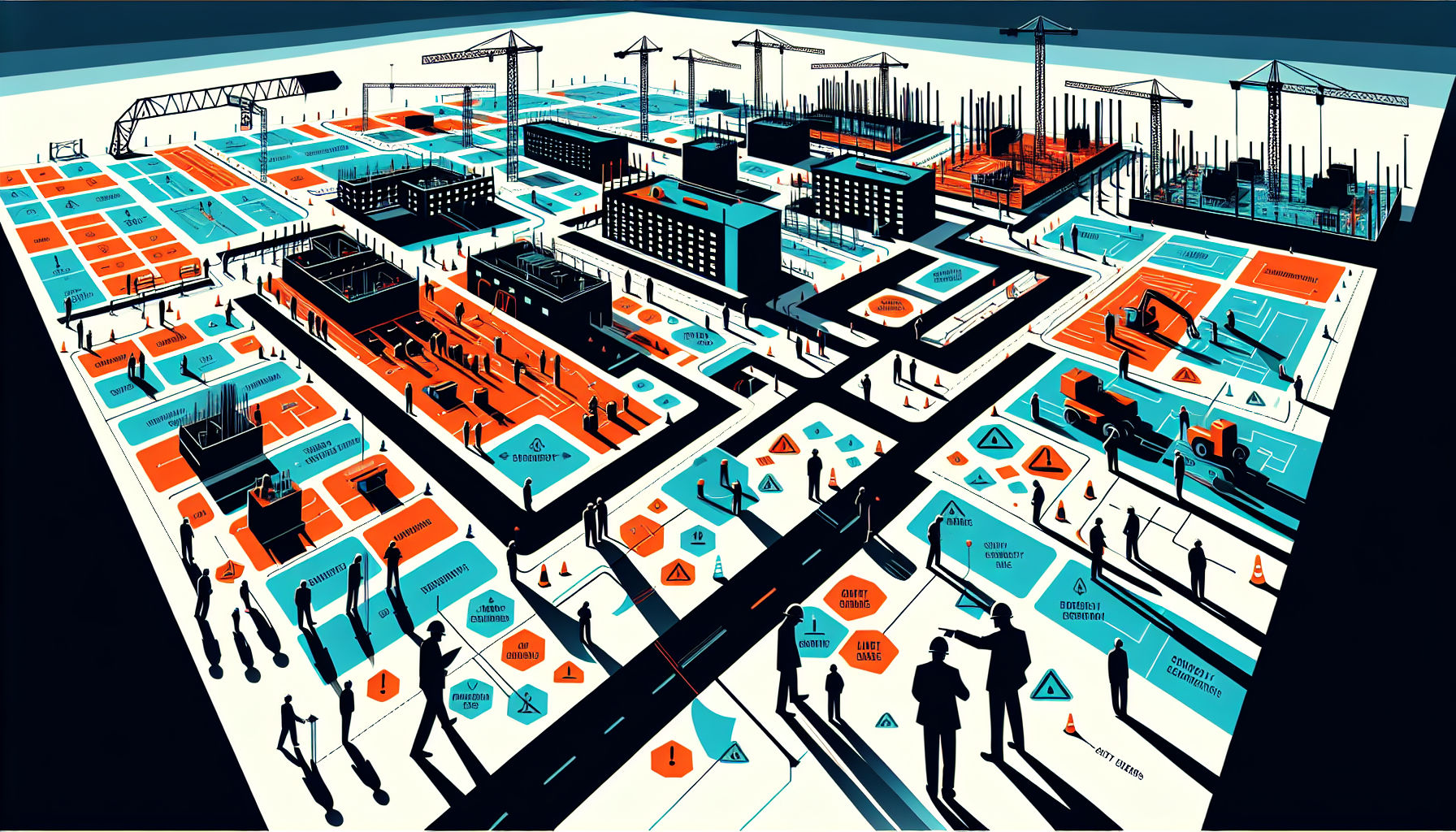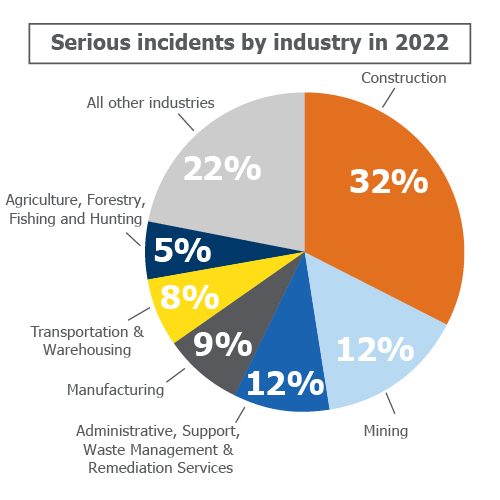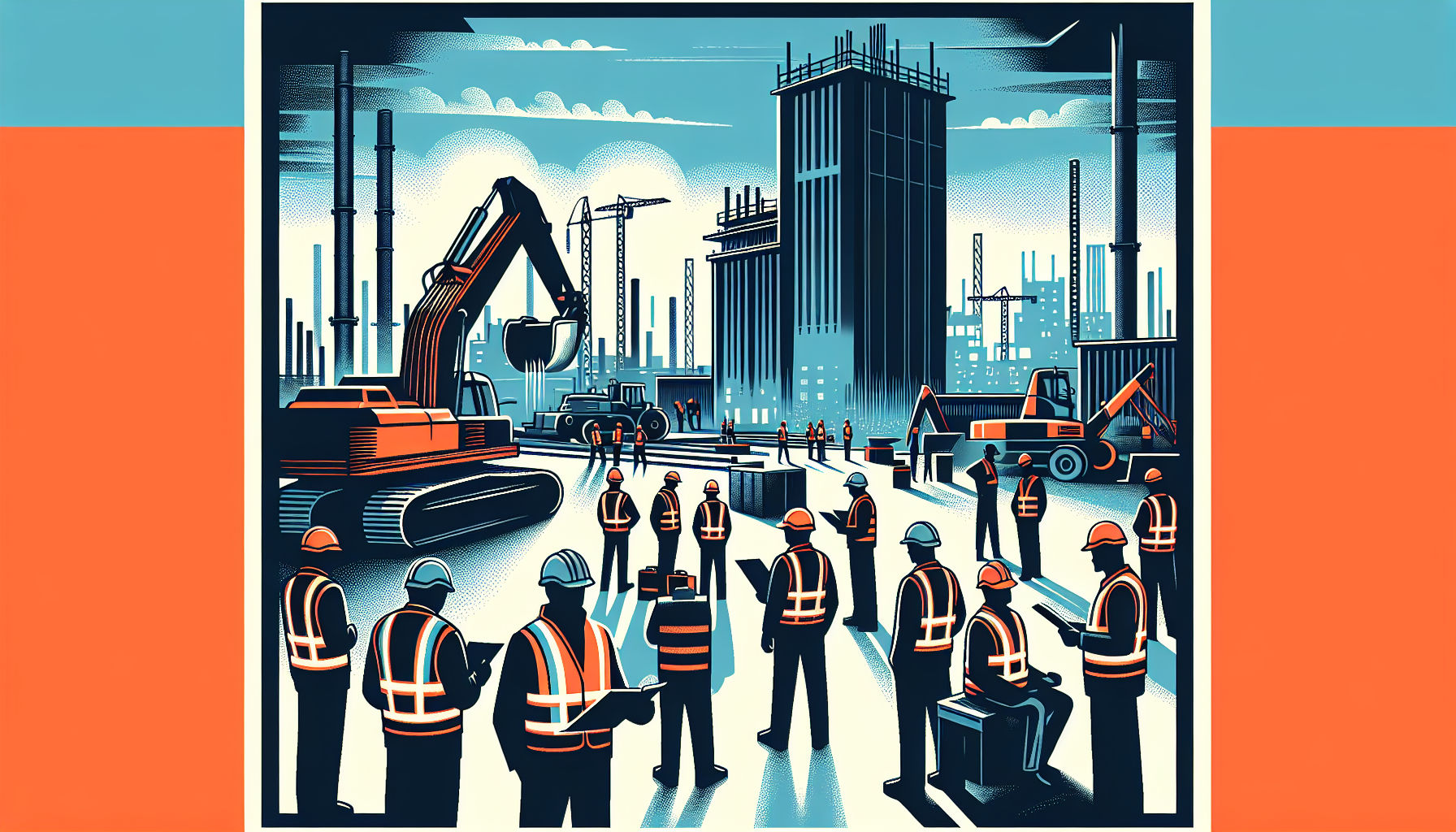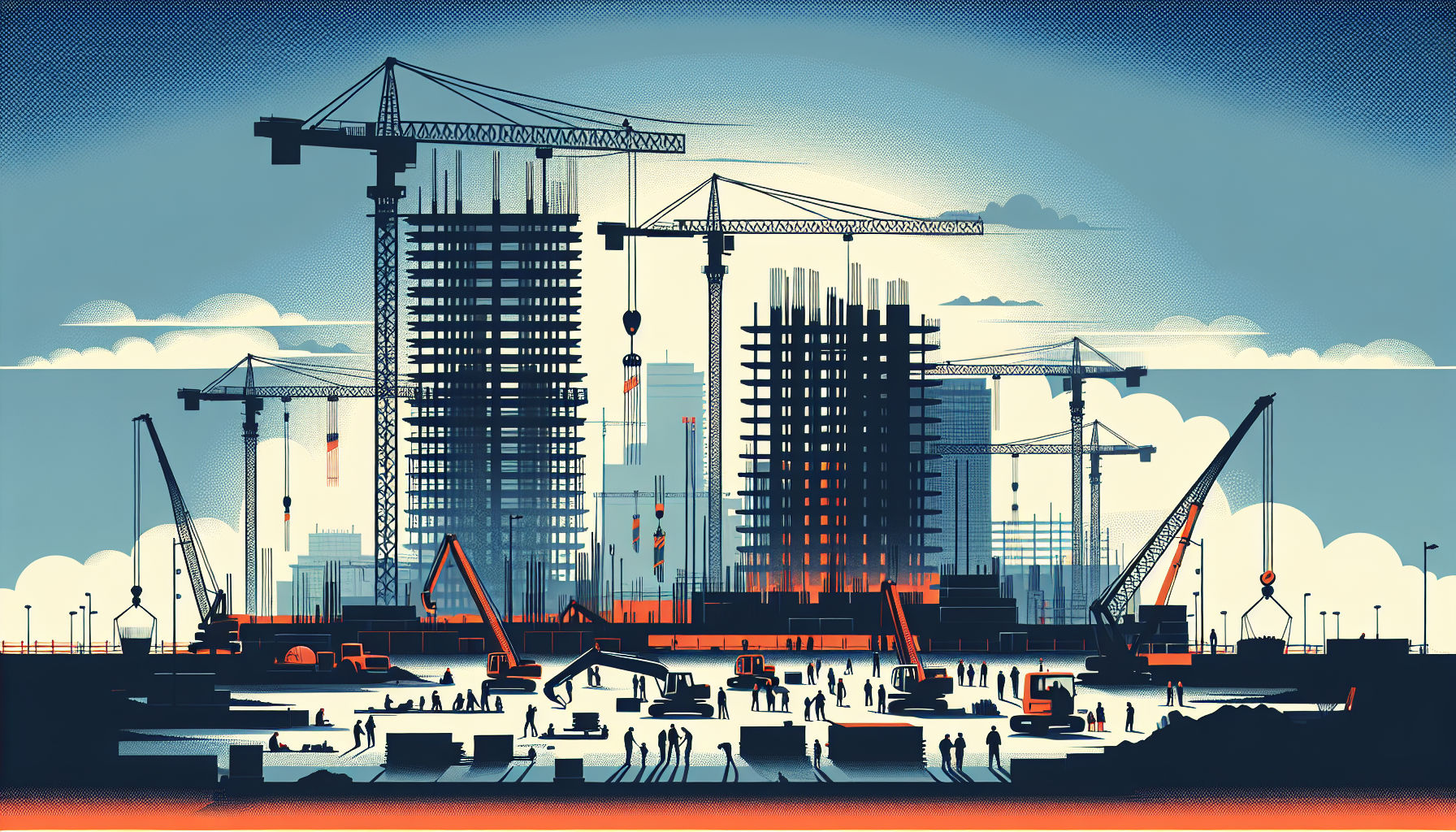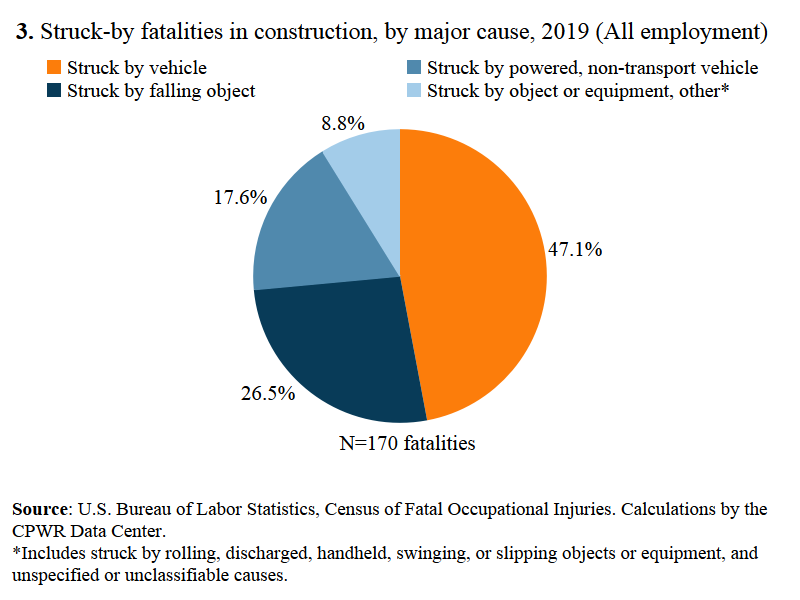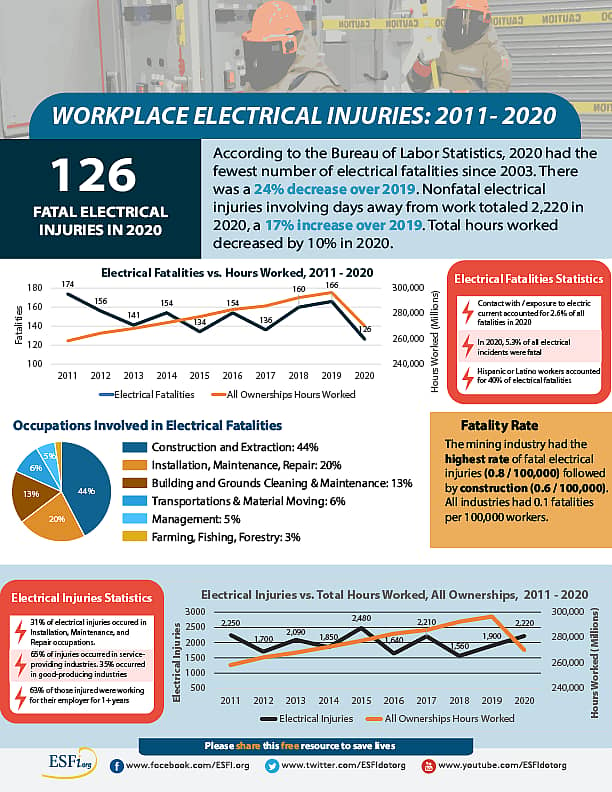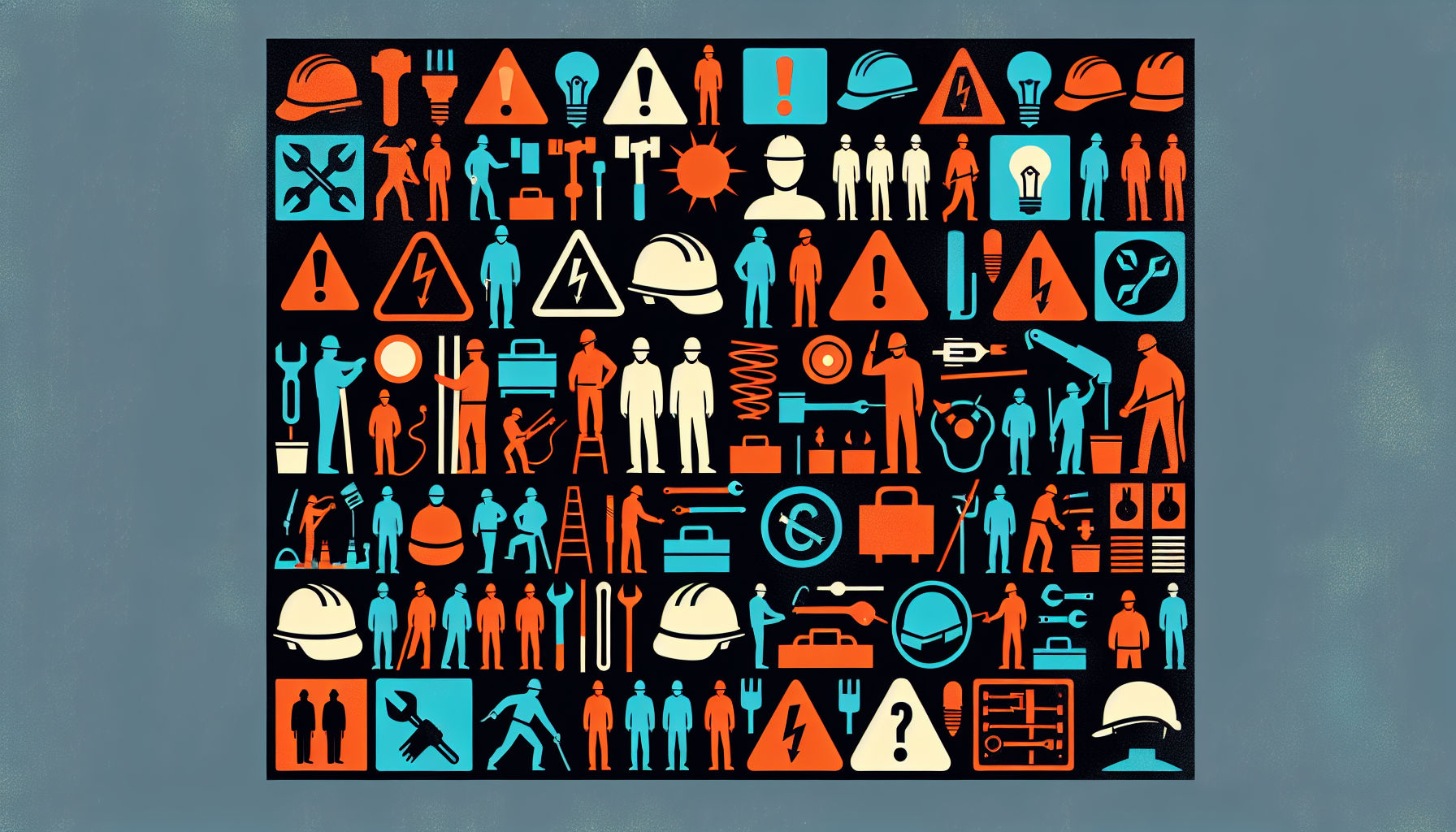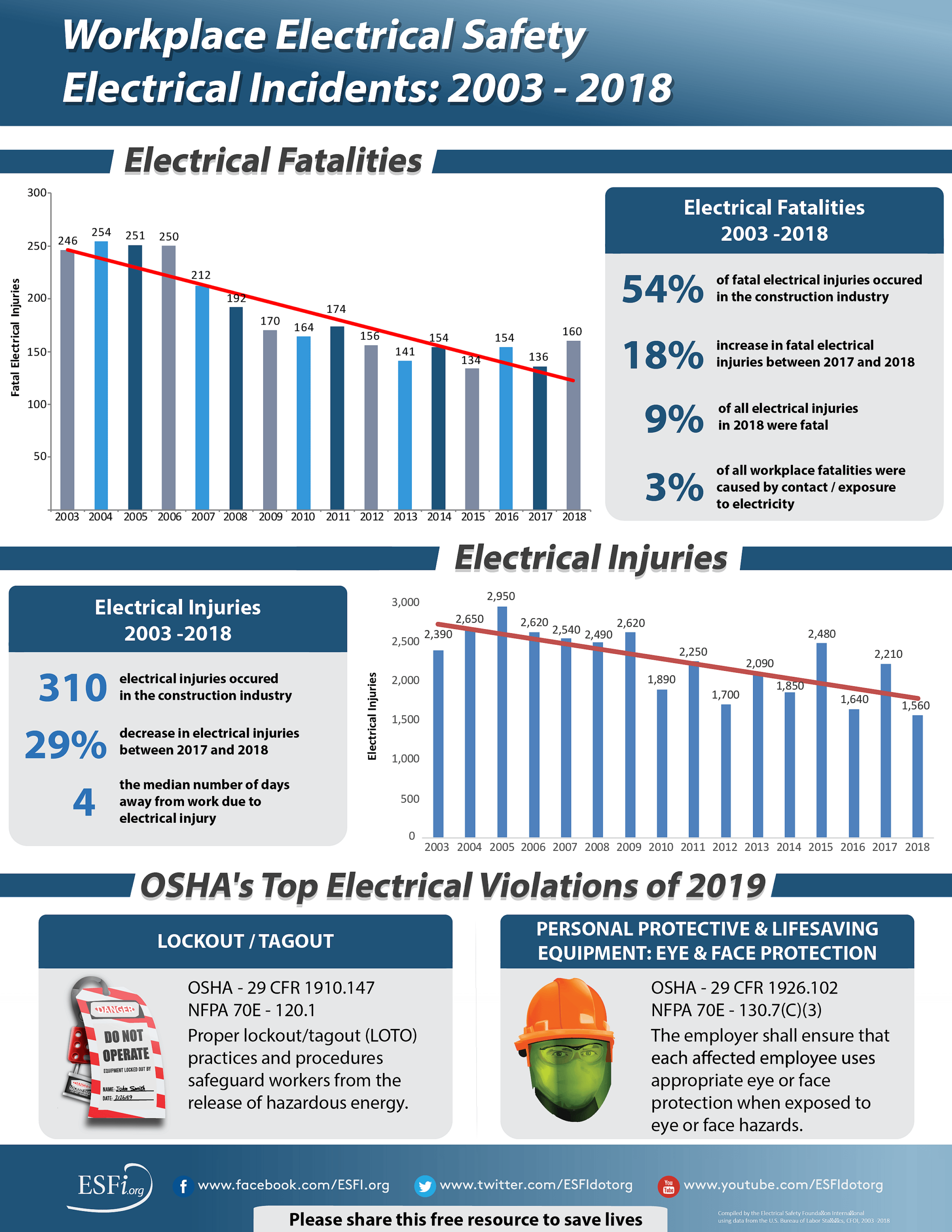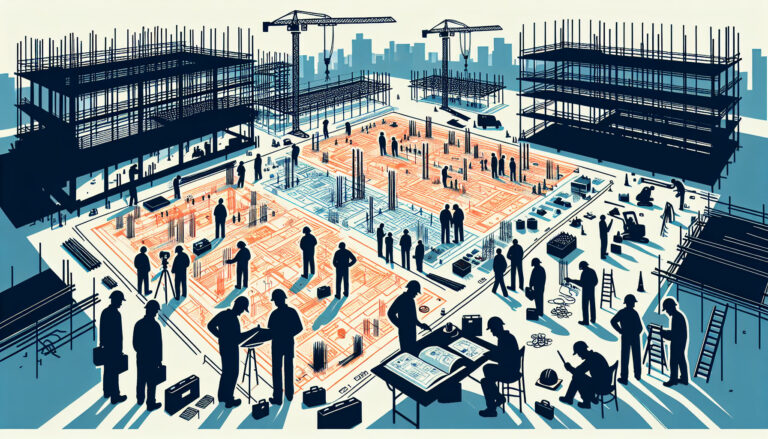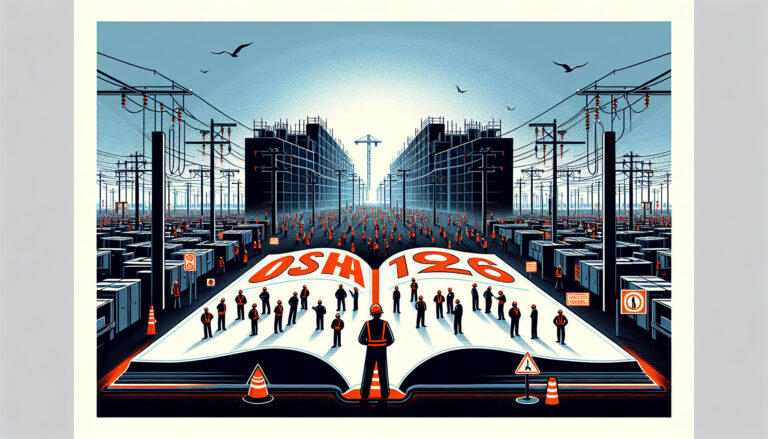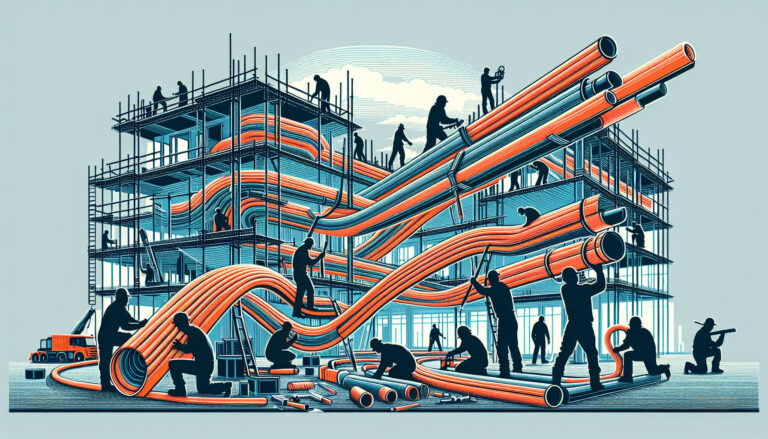The cornerstone of a well-operated construction site is its unwavering commitment to construction site safety. This dedication ensures not only the protection of workers from accidents and injuries but also guarantees smoother operations overall. In the dynamic field of construction, characterized by the high-risk nature of work involving heights, heavy machinery, and hazardous materials, the importance of adhering to sample construction site safety rules cannot be overstated.
Recognizing this, specialty electrical subcontractors find themselves in a constant search for efficient ways to mitigate these risks.
Implementing straightforward, easy-to-follow safety rules can dramatically elevate compliance. This enhances overall site safety. Given the evolving nature of construction work, with new technologies and methodologies continually emerging, there’s a pressing need for updated safety protocols.
This checklist, inspired by Juneau Construction’s operational upgrade as detailed in SmartBarrel’s case study, serves as a foundational resource aimed at assisting specialty electrical subcontractors in bolstering their project safety measures. It’s structured to offer:
Key Takeaways
- An acknowledgment of the critical role construction site safety plays in preventing workplace accidents.
- A comprehensive overview of the essential safety rules checklist tailored for 2024, reflecting the latest in technology and industry practices.
- Insights into how technology, specifically, can be leveraged to reinforce safety compliance effectively.
In an industry characterized by significant risks, staying informed about the most current safety protocols is paramount.
The data from SkillSignal, as shown in the ‘Construction’s Safety Statistics – SkillSignal’ chart, underscores the financial and human cost of insufficient safety measures.
Additionally, the ‘Fatal Worker Injuries at Work Construction Sites’ chart reveals a declining trend in fatalities, suggesting improvements in safety measures.
The ‘Types of Events Resulting in Highway Worker Fatalities at Road Construction Sites, 2017-2019 Average’ chart further highlights vehicular incidents as a major hazard, emphasizing the need for continuous improvement in safety protocols.
Emphasizing the significance of these statistics, it becomes clear that implementing a robust set of safety rules is not just a regulatory requirement but a moral imperative. For those engaged in the electrical subcontracting niche, particular attention must be paid to electrical safety protocols to prevent accidents common to their line of work.
Integrating modern solutions like SmartBarrel into daily operations emerges as an innovative approach to achieving higher levels of safety compliance. By facilitating biometric time tracking and implementing safety management systems, SmartBarrel aids in the precise monitoring of labor and real-time safety oversight. This convergence of technology and traditional safety practices marks a significant leap forward in ensuring the health and security of construction site workers.
By embracing technology-driven solutions like SmartBarrel for safety compliance, specialty electrical subcontractors can significantly reduce the risk of accidents on their projects. More importantly, by adhering to the guidelines outlined in this essential checklist, they ensure that their worksites are not only safe but also models of efficiency and innovation in 2024 and beyond. To gain further insights into preventing construction hazards, consider exploring SmartBarrel’s guide on effective hazard mitigation strategies.
Understanding Construction Site Safety
Construction Site Safety refers to the comprehensive measures and protocols implemented to prevent accidents and injuries on construction sites. It embodies the steps and rules we follow to foster a secure working environment for everyone involved in a construction project.
Consider construction site safety as a well-oiled machine where every component plays a crucial role. Just like a machine operates smoothly when all parts function correctly, adhering to safety protocols ensures that construction projects progress without delays or accidents. This analogy aptly describes how each safety measure, when followed diligently, contributes to the seamless continuation of work and the prevention of unforeseen complications.
A machine can’t run well if a part is broken. Similarly, a construction site can’t be safe unless everyone follows safety rules.
Preventing accidents means workers stay healthy, and projects stay on schedule.
Given the introduction of innovative technologies, materials, and construction methods, the field of construction safety is continuously evolving. This underscores the critical need to regularly update our safety protocols to address these changes effectively. The year 2024 brings with it fresh challenges and advances in technology and building methods. This evolution necessitates a fresh perspective on construction site safety to ensure it encompasses the latest risk mitigation practices and compliance standards.
New technologies make some jobs safer but can introduce new risks if we’re not ready for them.
By updating our safety rules, we ensure adherence to the latest occupational health standards and readiness for new challenges.
Understanding how construction site safety works, and why it’s critical, sets the stage for introducing specific sample construction site safety rules. These rules aren’t just about avoiding fines or following laws. They’re about ensuring every individual on site is protected from harm, thereby fostering a culture of safety and responsibility.
Let’s take a closer look at some sample construction site safety rules that every site should consider implementing as we move into 2024. These examples underscore the importance of evolving our approach to safety in light of new technologies and methodologies. As we explore these rules, remember how each one is integral to creating a secure and efficient working environment.
Sample Construction Site Safety Rules
1. Personal Protective Equipment (PPE) Use
- Every worker must wear the right PPE for their job at all times. This includes helmets, gloves, and safety glasses.
- PPE guards workers against common hazards found on construction sites.
2. Regular Safety Training
- All team members should undergo safety training at least once a year.
- Training updates everyone on new safety rules and technologies.
These are just a few examples of how updated construction site safety rules can make a real difference. As we embrace new advancements in technology and refine our methods, staying informed and compliant becomes non-negotiable.
Adopting these practices doesn’t just reduce the risk of accidents; it also promotes a culture of safety and responsibility across the workplace. This way, construction projects can proceed smoothly without unexpected interruptions or injuries.
As technology advances, SmartBarrel’s suite of construction management solutions, including biometric time tracking and safety management, plays an indispensable role in reinforcing safety measures on construction sites, thereby enhancing overall project efficiency and worker safety.
In the next section, we’ll dive deeper into how technology, particularly innovations like SmartBarrel, can enhance safety measures on construction sites, ensuring a safer work environment for everyone involved.
Prerequisites for Implementing Safety Rules
Assessing Site-Specific Hazards
Understanding the unique challenges that each construction site faces is key to enhancing safety, necessitating the development of sample construction site safety rules tailored to those specific conditions. Not all sites will present the same risks, making it vital to identify potential hazards specific to each location.
- Conducting a thorough site inspection before work begins can uncover hidden dangers. This proactive approach ensures that safety measures are tailored to address specific site conditions.
- Consulting with workers who are familiar with the day-to-day operations of the site can also reveal insights into less obvious risks. Their first-hand experience is invaluable in creating a comprehensive safety plan.
This focus on assessing site-specific hazards underscores the necessity of a comprehensive safety plan, tailored to the specific risks associated with each construction project, to enhance safety effectively.
As highlighted by CCS Construction Staffing, adapting safety protocols to address the particular needs of each project is crucial. Whether dealing with electrical hazards or the risks associated with working at heights, understanding these unique challenges is the first step toward preventing accidents and injuries.
Incorporating citations from SkillSignal, SafetySkills, and Safesite research supports claims about the effectiveness of multilingual training, the benefits of technology in safety compliance, and the importance of creating a multilingual safety program.
Establishing a Safety Culture
Safety on a construction site is not just about rules and regulations; it’s about fostering a culture where safety is prioritized by everyone, from leadership down. The role of management in this context cannot be overstated.
- Setting clear safety expectations establishes a benchmark for behavior on site. When leaders emphasize the importance of safety, it signals to every team member that their well-being is a top priority.
- Encouraging open communication about safety concerns allows for a transparent environment where workers feel comfortable reporting risks without fear of reprisal. This not only promotes a safer workplace but also reinforces trust between management and staff.
The essence of creating a robust safety culture lies in leadership’s commitment to safety as a core value, as evidenced by initiatives like those discussed in SkillSignal’s research, which emphasizes the importance of connecting everyone on-site to safety goals.
Active monitoring and enforcement of safety rules, through regular site inspections to ensure compliance with safety protocols, highlight the pivotal role of leadership in promoting safety.
Before we transition to the next part of our discussion, let’s examine the impact of these safety measures on project success through the following data visualization.
In transitioning smoothly to the next part of our discussion, it’s evident that laying the groundwork for safety—through understanding site-specific hazards and establishing a strong safety culture—is critical.
But equally important is harnessing technology to support these efforts. For instance, the case study on Related Urban Construction’s Compliance Management demonstrates how the adoption of SmartBarrel for workforce tracking and compliance reporting significantly reduced compliance reporting time and improved accuracy, illustrating the role of technology in establishing a safety culture.
Innovations like SmartBarrel offer an excellent example of how digital tools can elevate safety compliance and promote a culture of safety that permeates every level of the construction site.
As we explore further, let’s delve into how technological advancements are reshaping safety practices in the construction industry, making compliance simpler, and creating safer work environments for everyone involved.
Checklist for Sample Construction Site Safety Rules
1. Mandatory Personal Protective Equipment (PPE)
The foundational step towards ensuring construction site safety involves equipping all personnel with the necessary Personal Protective Equipment (PPE) at all times. Personal Protective Equipment (PPE) is crucial for minimizing exposure to hazards, including insulated gloves, hard hats, safety glasses, and flame-resistant clothing for electrical subcontractors. This protective gear is essential in minimizing exposure to common workplace hazards, such as falling objects or electrical shocks.
- What: Mandatory wear includes helmets to protect against head injuries, goggles for eye safety, gloves to prevent cuts and abrasions, and specialized PPE like insulated gloves for electrical subcontractors.
- When: PPE should be worn throughout the entire duration on-site, without exceptions.
- Why: The core reason behind this rule is to significantly minimize workers’ exposure to potential hazards that could lead to severe injuries or fatalities.
- Tips: Regular checks by supervisors ensure that all workers use their PPE correctly and that it’s in good condition. That includes making sure helmets fit securely and gloves are free from tears or excessive wear.
According to Electrical Contractor Magazine, advancements in PPE like hard hats with rotational damping technologies and multifunctional protective gloves are pivotal in offering better protection, showcasing the industry’s commitment to enhancing worker safety.
2. Regular Safety Meetings and Trainings
Another pillar of a safe construction site is the implementation of regular safety meetings and ongoing training sessions. Utilizing construction safety inspection software like Xenia, which integrates safety operations and inspection management, can help streamline these processes. These play a vital role in keeping safety practices top of mind for every team member, from new hires to seasoned veterans.
- What: Safety orientations at the start of a project, coupled with continuous training programs, ensure everyone is up to speed with current safety regulations and practices.
- When: Ideally, these meetings should occur at the start of the project and be repeated periodically throughout its duration.
- Why: Consistent reinforcement of safety procedures helps engrain these practices into the daily workflow, reducing the likelihood of accidents.
- Tips: Involving all levels of staff in these meetings fosters a comprehensive understanding of safety expectations across the workforce. Tailoring communication strategies to accommodate a multilingual workforce, as advised by Safety+Health, ensures messages are clearly conveyed and understood by everyone.
3. Clear Signage and Hazard Markings
Well-placed signs and hazard markings are critical in guiding workers away from potential dangers. Visible signage acts as a constant reminder of the areas within a construction site that require extra caution.
- What: Essential signage includes warnings of hazardous areas, indications of machinery operation zones, and restricted access points.
- When: Signage should be up before work begins and maintained throughout the project duration.
- Why: The primary objective is to make everyone on-site aware of existing hazards, effectively reducing the risk of accidental injuries.
- Tips: As site conditions evolve, so should the signage. Regular updates ensure that every sign reflects the current state of the site accurately.
4. Strict Adherence to Electrical Safety Protocols
For electrical subcontractors, specific safety measures tailored to electrical work are indispensable in preventing accidents related to electricity.
- What: This includes strict adherence to lockout/tagout procedures, maintaining a safe distance from power lines, and ensuring all electrical tools and equipment are regularly inspected.
- When: These protocols must be followed during any electrical work without exception.
- Why: The goal is to eliminate or substantially reduce electrical hazards that could lead to severe injuries or fatalities.
- Tips: Frequent inspections of electrical tools and equipment by qualified personnel verify that everything is in safe working order.
5. Implementation of Technology for Safety Compliance
Integrating modern technology, such as wearable tech that monitors vital signs and environmental conditions to prevent heatstroke or detect fall incidents, into safety practices offers an innovative approach to enhancing compliance and monitoring. For instance, AG Structures experienced a significant transformation in time tracking and safety compliance by implementing SmartBarrel’s time tracking device and software, which streamlined their payroll processes and provided accurate attendance records. Tools like SmartBarrel exemplify how digital solutions can significantly contribute to creating safer work environments.
- What: Biometric time tracking and comprehensive safety management systems streamline labor monitoring while providing real-time oversight of safety practices on-site.
- When: These technologies should be utilized throughout the project lifecycle for maximum effectiveness.
- Why: The application of technology in safety practices ensures accurate labor tracking, facilitates swift response to incidents, and promotes overall compliance with safety standards.
- Tips: For a seamless integration of new technologies, it’s advisable to choose solutions that easily blend with existing systems. The integration of SmartBarrel with Procore, highlighted in SmartBarrel x PROCORE – Integration that makes sense, stands as a prime example of how technology can elevate safety compliance.
As we wrap up our exploration of essential construction site safety rules for 2024, it becomes evident that a multifaceted approach—embracing everything from basic PPE usage to advanced technological tools—is key to fostering a safe working environment.
Transitioning into our next section, we will delve into practical strategies for effectively communicating these safety rules across the workforce. Ensuring that every team member understands and adheres to these guidelines is crucial for achieving a culture of safety excellence.
Conclusion: Emphasizing Construction Site Safety Rules Checklist and Technology Solutions
Change is constant in construction. Risks are ever-present. Yet, the evolving field of construction safety, shaped by new technologies, materials, and methods, guides every project towards success. This commitment to safety is our beacon. It’s what makes sites both safe and efficient.
The significance of focusing on safety in the construction industry is further illustrated by recent data.
These charts highlight the high percentage of serious incidents and the common causes of struck-by fatalities in construction, emphasizing the need for improved safety measures.
Recap of Importance:
- The evolving landscape of construction demands an adaptive approach to safety.
- Adherence to updated safety protocols not only complies with legal requirements but also embodies a moral commitment to worker well-being.
Sample Construction Site Safety Rules Checklist:
- Mandatory Personal Protective Equipment (PPE) to shield workers from physical hazards.
- Regular Safety Meetings and Trainings to keep safety practices front and center.
- Clear Signage and Hazard Markings to navigate workers away from potential dangers.
- Strict Adherence to Electrical Safety Protocols, crucial for preventing electrical accidents.
- Implementation of Technology for Safety Compliance, streamlining processes and enhancing oversight.
The introduction of technology solutions like SmartBarrel into the construction safety arena opens new horizons for compliance and efficiency. These tools offer a way to seamlessly integrate safety management into daily operations, ensuring real-time monitoring and adherence to safety standards.
As highlighted by research from CCS Construction Staffing and SkillSignal, the pressing need for updated OSHA regulations and the invaluable role of technological advancements underscore the critical nature of our collective mission: to ensure that every worker returns home safely at the end of the day.
This journey towards enhanced safety and compliance is not just about adopting new rules or technologies; it’s about fostering a culture that places the utmost value on human life and dignity.
The Prism Electric case study exemplifies the benefits of integrating technology like SmartBarrel for safety compliance, showcasing efficient time tracking and enhanced project analysis for safer construction sites.
Encouraging the adoption of technology solutions like SmartBarrel not only promotes this culture but also paves the way for smarter, safer construction sites. As we look ahead, let’s commit to leveraging these tools and guidelines to create an environment where safety is not just a priority but a cornerstone of our industry’s legacy.
Discover how SmartBarrel’s construction site safety management solutions can revolutionize your site’s safety practices.
Frequently Asked Questions
1. What are the 10 safety rules?
The top 10 general safety rules applicable to most construction sites include:
- Always wear Personal Protective Equipment (PPE) as required.
- Follow hazard communication guidelines to understand and mitigate risks.
- Engage in emergency preparedness to handle unexpected incidents effectively.
- Participate in regular safety meetings and trainings.
- Adhere to electrical safety protocols strictly.
- Use clear signage and hazard markings for guidance and warnings.
- Comply with lockout/tagout procedures during equipment maintenance.
- Implement fall protection measures when working at heights.
- Ensure tools and machinery are used and maintained correctly.
- Promote a drug-free workplace to enhance safety and productivity.
These rules highlight the importance of PPE, hazard communication, and emergency preparedness in maintaining construction site safety.
To stay ahead of regulatory changes anticipated in 2024, it’s crucial to adopt advanced safety technologies. SmartBarrel’s suite of construction management solutions, including biometric time tracking and safety management, aligns with these upcoming regulations, ensuring compliance and enhancing jobsite safety. Learn more about how SmartBarrel is revolutionizing construction site safety here.
2. What safety is required for construction site?
Essential PPE for construction sites, also known as construction site PPE, protects workers from common hazards:
- Helmets safeguard against head injuries.
- Gloves prevent cuts and abrasions.
- High-visibility clothing ensures workers are easily seen by others.
- Goggles protect eyes from debris.
- Insulated gloves for electrical subcontractors offer protection from electrical shocks, with recent advancements in PPE technology providing enhanced safety features.
Protective gear is crucial in minimizing exposure to workplace hazards. Small to medium-sized electrical subcontracting firms can affordably implement these advanced technology solutions by exploring leasing options or partnering with technology providers offering scalable solutions.
3. What are the 10 general safety rules in a workshop?
Workshop safety rules, or workshop safety rules, focus on preventing accidents through proper practices:
- Wear appropriate PPE at all times.
- Ensure machine guarding to protect against moving parts.
- Handle tools correctly and return them to their designated places after use.
- Keep workspaces clean to avoid slips, trips, and falls.
- Store hazardous materials safely according to guidelines.
- Disconnect power before performing maintenance on machines.
- Do not bypass safety features or controls on machinery.
- Be aware of emergency exits and evacuation procedures.
- Report any unsafe conditions immediately.
- Only operate machinery you are trained to use.
These rules emphasize machine guarding, proper tool handling, and maintaining clean workspaces.
Effective safety training in a worker’s native language significantly improves understanding and compliance, a finding supported by SafetySkills. Additionally, establishing a multilingual safety program is crucial for construction sites with diverse workforces, as highlighted by Safesite.
4. What are some on-site rules?
Sample site rules, also referred to as on-site rules, focus on ensuring safety through access control and proper equipment use:
- Restricted access to authorized personnel only to ensure safety and security on-site.
- Zero tolerance policy towards substance abuse to maintain a safe working environment.
- Mandatory use of safety equipment, such as hard hats and safety harnesses, depending on the task.
- Compliance with scheduled break times to prevent fatigue-related accidents.
- Reporting all accidents, no matter how minor, to promote a culture of transparency and prevention.
Highlighting sample construction site safety rules helps underline the significance of access control, substance abuse policies, and the mandatory use of safety equipment.

